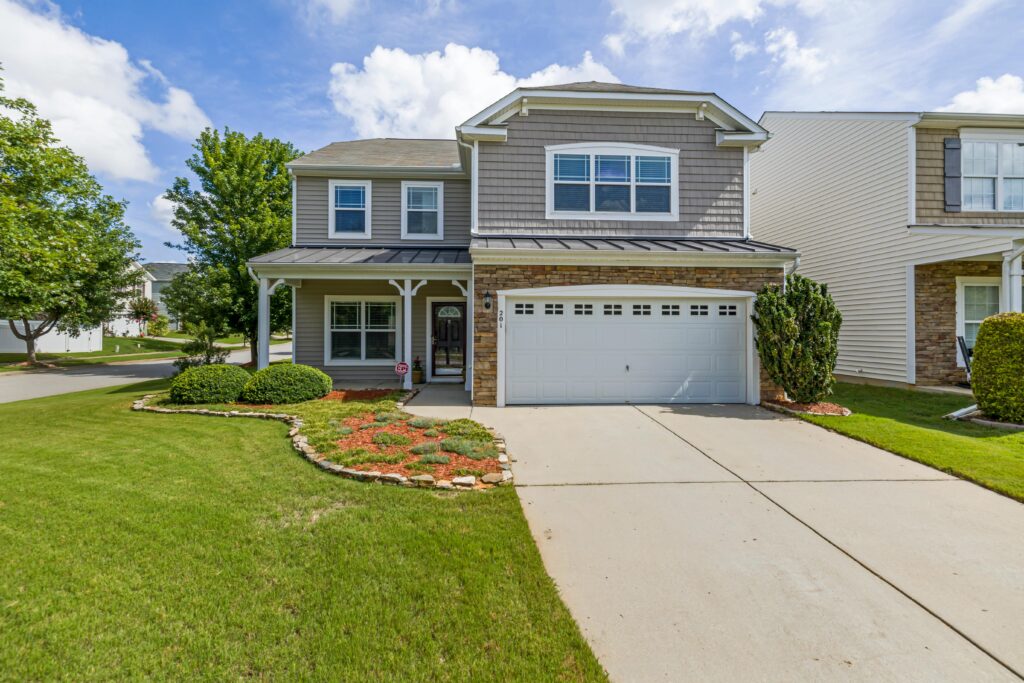Introduction
When designing your yard, it’s easy to make landscaping mistakes that can impact the beauty and functionality of your outdoor space. From planting without considering growth and spacing to ignoring soil quality, these common yard design errors can lead to overcrowded plants, poor drainage, and extra maintenance. By understanding the most frequent landscaping mistakes to avoid, you can create a well-planned yard that stays healthy and visually appealing for years. This guide covers key errors to look out for and provides tips to keep your landscape thriving and low maintenance.
Top Landscaping Mistakes to Avoid for a Beautiful Yard

Avoiding common landscaping mistakes can make all the difference in achieving a thriving, low-maintenance yard. Here are some of the top landscaping mistakes to avoid to keep your outdoor space looking its best:
1. Neglecting a Comprehensive Landscape Plan
One of the biggest mistakes in landscaping is diving in without a well-thought-out plan. Designing your landscape on the fly can lead to an uncoordinated look and missed opportunities for functionality.
- Why It’s a Mistake: Without a plan, you may end up with clashing elements or awkward spaces that don’t serve your needs.
- Solution: Sketch out your landscape, considering key factors like pathways, plant zones, seating areas, and focal points. Planning in advance allows you to make intentional choices that contribute to a cohesive design.
A comprehensive plan provides a clear roadmap for your landscape, ensuring that each element serves a purpose and fits into the larger picture.
2. Planting Without Considering Growth and Spacing
Many homeowners plant trees, shrubs, and flowers without accounting for their mature size, leading to overcrowding and maintenance issues down the line.
- Why It’s a Mistake: Overcrowded plants compete for nutrients, light, and water, which can stunt growth and impact plant health.
- Solution: Research the mature size of each plant before placing it in your yard. Give each plant the space it needs to thrive by following recommended spacing guidelines for trees, shrubs, and flower beds.
Proper spacing ensures that plants grow to their full potential, prevents overcrowding, and reduces the need for future replanting.
3. Ignoring Soil Preparation and Testing
Plant health depends heavily on the quality of the soil, yet many people overlook soil preparation, leading to poor growth and potential plant failure.
- Why It’s a Mistake: Different plants have specific soil needs in terms of pH, drainage, and nutrients. Ignoring soil quality can result in stunted plants or unhealthy growth.
- Solution: Test your soil before planting. Based on the results, amend the soil with compost, fertilizers, or pH-adjusting products to ensure the right conditions for your plants.
Rich, healthy soil is the backbone of any vibrant and thriving landscape. Proper preparation sets your plants up for success from the start.
4. Overusing One Type of Plant
While it’s tempting to plant one type of flower or shrub for a uniform look, using too much of one species can make your landscape look flat and can increase vulnerability to pests and diseases.
- Why It’s a Mistake: Monocultures, or single-species plantings, are more susceptible to issues like disease and pest infestations.
- Solution: Diversify your plant selection. Combine flowering plants, shrubs, grasses, and trees to add layers of depth and captivating visual appeal to your landscape . Mixing native plants is especially beneficial, as they adapt well to local climates.
Diversity in plants enhances resilience and adds visual layers to your yard, making it more attractive and easier to maintain.
5. Choosing Plants Unsuitable for Your Climate
Selecting plants that don’t thrive in your local climate often leads to disappointment and extra work. Each region has specific weather patterns, temperatures, and growing conditions that affect plant success.
- Why It’s a Mistake: Plants not suited for your climate will require extra watering, protection, and care to survive, often with limited success.
- Solution: Choose plants that are hardy in your climate zone. Look for plants native to your area or those marked with the appropriate USDA hardiness zone for your region.
Using climate-appropriate plants reduces the need for extra care and ensures that your landscape remains healthy and attractive throughout the seasons.
6. Neglecting Maintenance Needs
A beautiful landscape requires regular upkeep, and underestimating maintenance needs can leave your yard looking overgrown and neglected.
- Why It’s a Mistake: Plants, shrubs, and trees require ongoing care, including pruning, watering, and weeding. Without maintenance, even the most attractive landscapes can become unkempt.
- Solution: Choose plants that match the level of maintenance you’re willing to commit to. If you want a low-maintenance yard, opt for drought-resistant plants and slow-growing shrubs.
Consistent upkeep preserves the beauty and health of your landscape, preventing it from becoming overgrown or messy.
7. Ignoring Sunlight Patterns
Plant placement based on aesthetics alone often leads to poor results if you ignore how much sunlight each area of your yard receives.
- Why It’s a Mistake: Different plants require different amounts of sunlight. Positioning sun-loving plants in shade or shade-loving varieties in full sun can hinder their growth and may cause them to fail altogether.
- Solution: Observe your yard’s sunlight patterns throughout the day, and place plants in areas where they’ll receive their required light. Use shade-tolerant plants in lower-light areas and reserve sunny spots for plants that need more direct sunlight.
8. Forgetting About Drainage
Poor drainage can lead to waterlogged soil, which can suffocate plants and lead to root rot.
- Why It’s a Mistake: Excess water buildup can create muddy areas, drown plant roots, and cause soil erosion.
- Solution: Create a drainage plan to manage water flow across your yard. Consider installing French drains, swales, or dry creek beds to direct water away from areas where it might pool.
Conclusion
Avoiding these common landscaping mistakes can save you time, money, and frustration while creating a healthy, attractive outdoor space. By planning your landscape carefully, choosing the right plants, and being mindful of factors like spacing, sunlight, and drainage, you’ll be on your way to a thriving yard that’s easy to maintain and visually stunning. Whether you’re starting from scratch or renovating an existing landscape, avoiding these pitfalls will help ensure your yard remains a source of pride and enjoyment for years to come.














